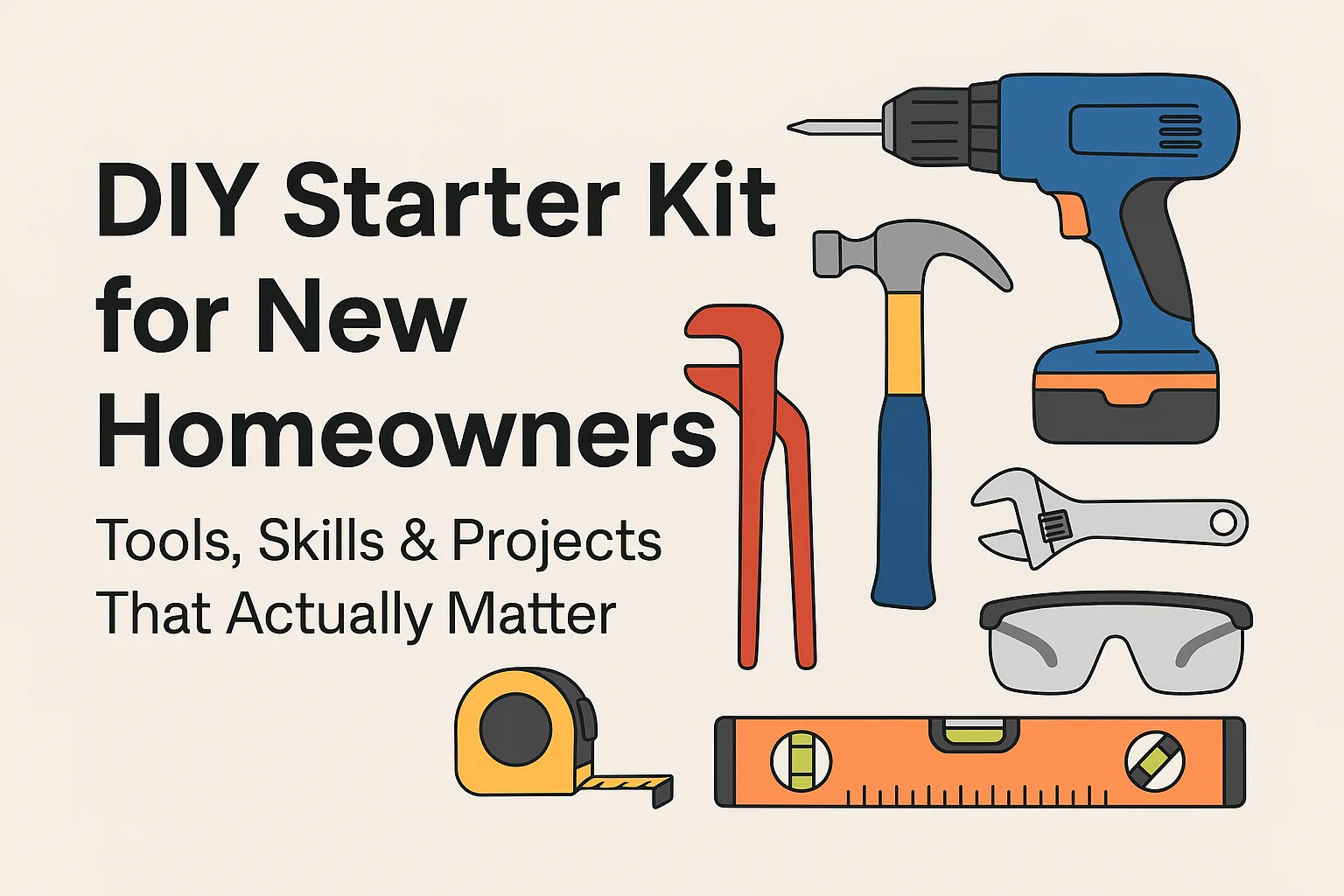New! DIY Project Planner. Plan smarter, skip the spreadsheets. Start Your Free Trial Today →

The essential DIY starter kit for new homeowners isn’t just about tools — it’s about control. Because the moment you own a home, every leaky faucet, crooked shelf, or mystery hole in the wall becomes your responsibility.
No landlord. No maintenance request. Just you, the problem, and whatever you’ve got on hand.
Most homeowners don’t realize this until they’re already in over their head — trying to hang shelves with a butter knife or fix drywall with painter’s tape. This guide exists to change that.
What follows isn’t a checklist. It’s the first real toolkit for homeownership: the tools, the skills, and the starter projects that build confidence, not chaos.
It’s not a lack of motivation that stalls most people. It’s that they don’t have the right tool when they need it—or they try to fix something they don’t understand and make it worse.
That leads to frustration, expensive mistakes, or giving up completely.
The fix? Start small, learn fast, and build confidence through momentum. That means three things:
Most pre-packed tool kits are stuffed with junk you’ll never touch. What you need is a lean setup of gear that can solve real problems—fast.
Here’s what belongs in your DIY starter kit (and nothing more):
These tools don’t just “check the box.” They’re the ones you’ll reach for in a real pinch—whether you’re patching a wall or assembling your new IKEA sofa.
Don’t let your drill collect dust — this list shows what it’s really capable of.
Before you go tearing into a wall or rewiring your ceiling fan, learn the three foundational skills that will pay dividends immediately:
Nail pops. Picture holes. Door handle dents. Every home has them. Learn how to patch drywall properly and your walls will always look fresh. Don’t just slather on spackle and call it good—learn how to feather edges, let it dry, and sand smooth.
View our Drywall Patching Guide
Light switches, outlets, sink faucets—they wear out fast or need upgrading. Knowing how to safely cut power, remove hardware, and reinstall the new version is empowering. You’ll save hundreds with this skill alone.
Check out How to Replace an Outlet or Switch
Leaky windows and moldy bathrooms are often caused by bad caulking. Learning to remove old sealant and apply clean, consistent lines keeps water out and your home looking sharp.
View our Caulking Maintenance Guide
Each of these teaches more than just the task. You learn patience, hand control, and the value of preparation—all transferable to future projects.
Start with wins. These projects are beginner-safe, under $100, and make your home feel better right away.
Each of these projects teaches something new while giving you a real result. That’s what makes them powerful. You don’t just feel more capable—you become more capable.
There are some projects that look “easy” on YouTube but are nightmares for beginners. Wait until you’ve got more hands-on time before tackling:
Save those for when you’ve built your tool skills and can spot bad advice online.
No one shows up at their first house knowing what they’re doing. But with a smart starter kit, a few guided wins, and the right mindset, you’ll move from homeowner to home improver faster than you think.
Forget the Instagram-perfect setups. Real DIY starts with a solid hammer, a clean caulk line, and the confidence that comes from solving one small problem at a time.